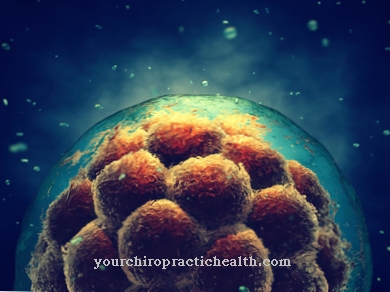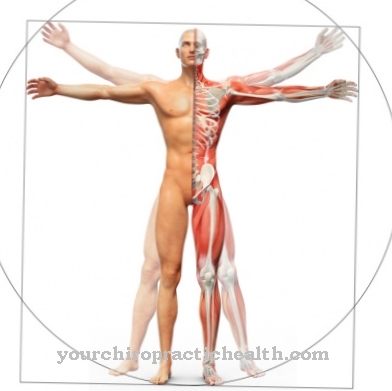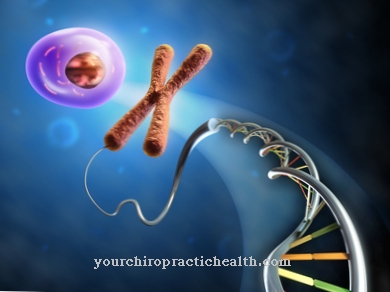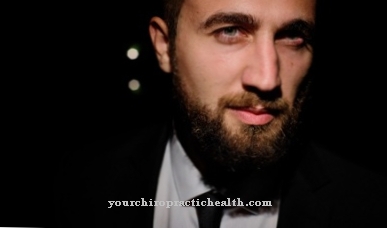In contrast to some animal eyes, the human eye is dependent on light for its function. The less light surrounds us, the less shapes and outlines can be perceived. The more light falls into our eyes, the more colorful and clear the world around us becomes. For this reason, the human eyes have the mechanism of Light adaptation (also Light adaptation), by means of which it can adapt to different degrees of brightness. If this does not work or works poorly, it can lead to impaired vision or health impairments.
What is the light adaptation?

By definition, light adaptation is the adaptation of the visual organ to different levels of brightness. The word adaptare (German: to adapt) comes from Latin and is still used today for the process of adaptation in both German and the Romance languages.
The eye can adjust to different intensities of light by opening and narrowing the pupil. A healthy eye copes with this task automatically - it is one of the reflexes that take place in the body without the involvement of consciousness. Automated protective mechanisms of the body such as increased blinking and squinting of the eyes are secondary to the term light adaptation.
Function & task
The pupil is not a skin or an organ, but an opening into the inside of the eye. All around it is bordered by the brown, green or blue iris or iris. The iris has two smooth muscles - the pupil dilator and the pupil constrictor - which trigger the pupillary reflex through tension and relaxation. These are parasympathetic muscles that belong to the smooth and unconsciously controllable muscles.
The pupil constriction can be observed very well by suddenly looking into bright light, but the pupil dilator takes a little longer to react to a darker environment - this can also be observed when changing from a light to a dark environment.
The cause of this phenomenon are the rods and cones on the retina, which are responsible for color vision in high light and black and white vision in low light. They react immediately to light stimuli and send the corresponding message to the brain via the optic nerve.
A functioning light adaptation ensures that we immediately perceive too much light, which can no longer be managed by the pupil reflex alone, as uncomfortable and close our eyes, shade with the hand, put on sunglasses or protective goggles or leave the bright surroundings.
The automatic protective measures we take include blinking and squinting the eyelids significantly more frequently. Because a long look into the sun is enough to raise the temperature inside the eye, especially on the lens and retina, by two to three degrees.
However, a functioning light adaptation only affects the light spectrum that can be perceived by the eyes. Large parts of the ultraviolet, infrared and blue light are imperceptible and can hit the retina unhindered through the lens - here the pupillary reflex must be supported by suitable protective devices such as good sunglasses.
Children in particular are at risk and must be protected. In a child in the first year of life, almost all UV rays reach the retina unhindered; only in adulthood are they almost entirely absorbed by the lens. The situation in diabetics is similar to that in children.
You can find your medication here
➔ Medicines for eye infectionsIllnesses & ailments
The pupillary reflex is very important for people and their eyes, since the eye can be severely damaged in the long run by too much brightness. Continuous strong light radiation that hits the lens and subsequently the retina in a concentrated manner leads to injuries and thus to vision problems or loss of vision.
Our eyes cannot simply be switched off, that is, as long as we are alive and awake, they have to be able to process the incidence of light and that includes not only the perceptible light spectrum but also ultraviolet light, infrared light and blue light. Not to be forgotten in this context are the artificial light sources that our civilization is constantly surrounded by (lamps, headlights, lasers).
The greater burden on the eye, in contrast to earlier times, results from the higher life expectancy, the changed leisure behavior (holidays, snow sports, water sports) and the changed environmental conditions (ozone hole). People should be aware, for example, that snow reflects the sun's rays by up to 80%, water by a quarter, light sand by around 10% ..
Damage due to too much brightness or a reduced or insufficient light adaptation can primarily affect the lens, but subsequently also the choroid and retina. The cornea and conjunctiva that lie in front of the pupil can also be damaged by too strong light and constant exposure to light (snow blindness, flashing), which, however, cannot be influenced or avoided by light adaptation, but only through appropriate protection.
The lens that bundles the incident light receives most of the incident radiation. With constant exposure to light, cataracts (clouding of the lens, reduced visual acuity and reduced transparency) can be triggered or accelerated. A damaged lens cannot be regenerated by the body and must be surgically replaced.
The choroid, which supplies the eye with blood, is also affected by excessive incidence of light, as well as the retina it supplies. Continuous exposure to light leads to permanent damage to the retina and the macula (place of sharpest vision). Every small crack in the retina manifests itself in reduced vision, larger failures appear in a blind, i.e. dark spot and other restrictions in the field of vision.
Melanomas in these skins can also be partly attributed to constant and high exposure to light. A damaged retina is irreparable. While light damage to the outer eye, i.e. to the cornea and conjunctiva, can be recognized and treated immediately due to extreme pain, damage to the lens, choroid and retina occurs gradually and is therefore difficult or impossible to treat.





.jpg)





















